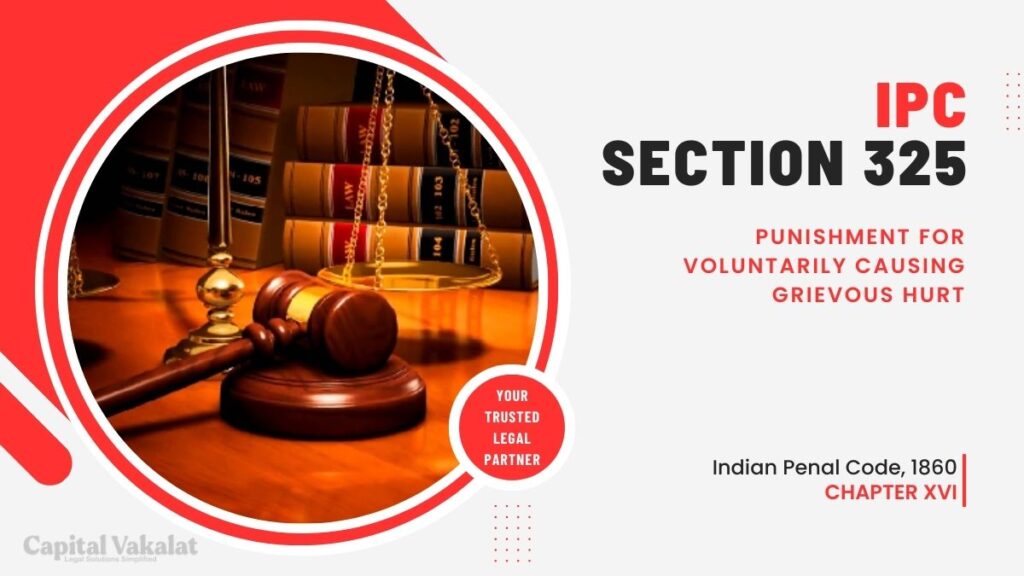Section 325 of the Indian Penal Code (IPC) holds paramount importance in the legal framework, outlining the punishment for voluntarily causing grievous hurt.

In this article, we delve into the intricacies of this section, exploring its definition, legal implications, and the broader context within criminal law.
Understanding Section 325 IPC
In legal terms, Section 325 IPC addresses the intentional infliction of severe injuries on an individual. It’s crucial to distinguish between “hurt” and “grievous hurt.” While the former refers to any bodily pain or injury that is not life-threatening, the latter involves more severe consequences, such as fractures or injuries endangering life.
Elements of Voluntarily Causing Grievous Hurt
For an offense under Section 325, two primary elements come into play—intent and action. The accused must have the intention to cause harm, and their actions should result in grievous hurt. This section considers the severity of injuries, making it imperative to establish the gravity of harm inflicted.
Legal Consequences
The legal repercussions outlined in Section 325 IPC are significant. Offenders may face imprisonment or fines, depending on the severity of the harm caused. Court cases related to this section provide valuable insights into the interpretation and application of the law.
Contextual Examples
To comprehend the practical implications of Section 325 IPC, it’s essential to examine real-life scenarios. Court judgments and analyses of specific cases shed light on the nuances of the law, emphasizing the importance of context in legal proceedings.
Comparisons with Related Sections
Distinguishing Section 325 from other relevant sections of the IPC is crucial. By understanding these distinctions, individuals can gain clarity on the specific offenses covered under each section, ensuring a more precise interpretation of the law.
Challenges in Implementing Section 325 IPC
Despite its significance, the implementation of Section 325 poses challenges. Legal complexities, coupled with difficulties in proving intent and causation, contribute to the intricacies surrounding this provision.
Significance in Criminal Law
Section 325 serves not only as a punitive measure but also as a deterrent. The severity of the consequences emphasizes society’s intolerance for intentional harm, striking a balance between justice for the victim and the potential for rehabilitation for the offender.
Public Awareness and Education
Creating awareness about Section 325 IPC is crucial for fostering a law-abiding society. Initiatives aimed at educating the public on legal matters can contribute to a better understanding of the consequences of actions, thereby reducing instances of intentional harm.
Conclusion
In conclusion, Section 325 IPC plays a pivotal role in addressing cases of voluntarily causing grievous hurt. Its nuances, legal consequences, and broader implications within the criminal justice system underscore the need for a comprehensive understanding of this provision. As society evolves, so must our awareness of the laws that govern it.
Frequently Asked Questions
What are the legal consequences outlined in Section 325 IPC?
Section 325 IPC prescribes penalties, including imprisonment and fines, based on the severity of the harm caused.
How does Section 325 IPC contribute to the deterrence of intentional harm?
By imposing significant legal consequences, Section 325 serves as a deterrent, signaling society’s intolerance for acts of intentionally causing grievous hurt.
Are there challenges in proving intent and causation under Section 325 IPC?
Yes, the legal complexities surrounding intent and causation pose challenges in the effective implementation of Section 325.
What initiatives exist for public education on legal matters, including Section 325 IPC?
Various initiatives aim to educate the public on legal matters, emphasizing the consequences of intentional harm under Section 325 IPC.